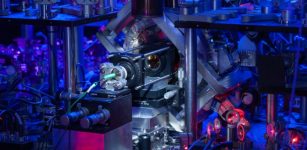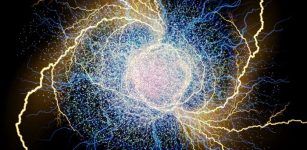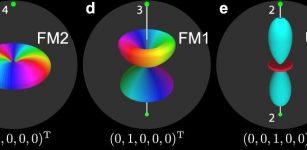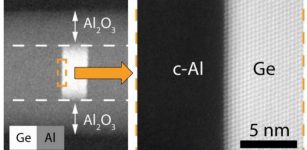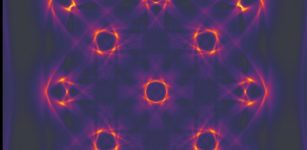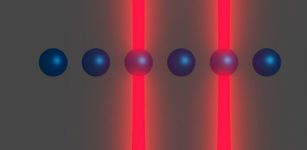A Novel Quantum Theory Of Light-Induced Matter – Developed
Eddie Gonzales Jr. – MessageToEagle.com – A team led by a physicist from City University of Hong Kong (CityU) recently developed a new quantum theory that explains the “light-induced phase” of matter and predicts its novel functionalities.
Schematic illustration of time-resolved spectroscopy for the light-induced phase of molecules proposed based on the new quantum theory. Emission signal is collected in detector after the laser pulses that excite molecules, yielding a multi-dimensional imaging of exciton dynamics in real-time domain. Credit: Dr. Zhedong Zhang/City University of Hong Kong
The new theory has the potential to revolutionize the field of quantum photonics and quantum control at room temperature. It also opens the door to a variety of next-generation light-based applications, such as optical communications, quantum computing and light-harvesting technologies.
Scientists have found exotic phases in matter, in addition to the usual ones, known as the solid, liquid and gas phases. And in different phases in which the atoms undergo certain arrangements in space, the matter may have different properties. As one category of the newly discovered phases, light-induced phases have drawn a lot of attention from scientists in the past decade, as they have been regarded as a promising platform for new photovoltaic panels and new chemical platforms, as well as a new avenue for modern quantum technology.
“The ultrafast processes of photoactive molecules, such as electron transfer and energy redistribution, which are typically at the femtosecond scale (10-15s), are of extensive importance for light-harvesting devices, energy conversion and quantum computing,” explained Dr. Zhang Zhedong, Assistant Professor of Physics at CityU, who led the study. The findings were published in the journal Physical Review Letters under the title “Multidimensional coherent spectroscopy for molecular polaritons: Langevin approach.”
“However, the research on these processes is full of obscurities. Most of the existing theories related to light-induced phases are bottlenecked by time and energy scales and therefore cannot explain the transient properties and ultrafast processes of molecules when short laser pulses come into play. These impose a fundamental limit for exploring the light-induced phases of matter,” said Dr. Zhang.
To tackle these difficulties, Dr. Zhang and his collaborators developed a novel quantum theory for the optical signals of the light-induced phases of molecules, which is the first in the world. The new theory, through mathematical analysis in conjunction with numerical simulations, explains the excited state dynamics and optical properties of molecules in real time, overcoming the bottlenecks resulting from existing theories and techniques.
The new theory integrates advanced quantum electrodynamics into ultrafast spectroscopy. It uses modern algebra to explain the nonlinear dynamics of molecules, which lays the foundation for developing state-of-the-art technological applications for lasers and material characterization. It thus offers new principles for optical detection and quantum metrology.
“What is particularly fascinating about our new theory is that the cooperative motion of a cluster of molecules shows a wave-like behavior, which spreads over a distance. This was not achievable in conventional studies. And this collective motion can exist at room temperature, instead of only in an ultralow, cryogenic temperature previously. This means that precise control and sensing of particle motion may be feasible at room temperature. This may open new frontiers of research, such as collective-driven chemistry that could potentially revolutionize the study of photochemistry,” said Dr. Zhang.
The new quantum theory facilitates the design of next-generation light-harvesting and emitting devices, as well as laser operation and detection. The coherence emerging from the light-induced molecular cooperativity may lead to bright emission of light. The spectroscopic probes of the light-induced phase of matter in the research can help to exploit next-generation optical sensing techniques and quantum metrology.
At a larger scale, the light-induced phases may enable a variety of novel light-based interdisciplinary applications, such as optical communications, biological imaging, control of chemical catalysis, and designating light-harvesting devices in an energy-efficient manner.
In the near future, the researchers plan to explore the light-induced phases and their effect on quantum materials, and develop new spectroscopic techniques and detection in the context of quantum entanglement.
Written by Eddie Gonzales Jr. – MessageToEagle.com Staff



